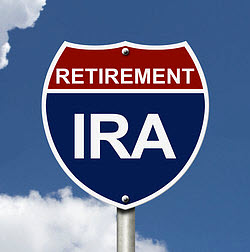 Investing in real estate as a part of your retirement planning requires you to learn the governing rules and regulations that will affect your decision. Some conventional IRA experts say that it is better to stay away from investing in real estate through IRAs due to the strict government control over them and the hefty penalties imposed on wrongful transactions.
Investing in real estate as a part of your retirement planning requires you to learn the governing rules and regulations that will affect your decision. Some conventional IRA experts say that it is better to stay away from investing in real estate through IRAs due to the strict government control over them and the hefty penalties imposed on wrongful transactions.
However, if you have a bit of help from a knowledgeable adviser, do your own due diligence, are aware of the rules governing IRAs, and have a keen eye to spot real estate deals, then real estate investing may be the way for you to further diversify your IRA account.
In order to make a real estate investment with your IRA, you need to make sure your IRA is with the right type of custodian, one that will allow you to make alternative investments. However, it is important to keep in mind that the custodian of the IRA, when you choose to go self-directed, only carries out the details of your investment transactions in your specific direction.
Therefore, the custodial firm you select for your account is not responsible for an errant investment, a poor purchase, or a prohibited transaction made on your part because your custodian is essentially a third party to your investment selection.
Investing in real estate through a self-directed IRA can be a viable option for those looking to diversify their retirement portfolio and potentially earn higher returns. However, before making this decision, it is important to thoroughly understand the pros and cons, as well as the rules and regulations that govern self-directed IRA investments.
Pros of Investing in Real Estate with an IRA:
Diversification: Real estate investments can provide portfolio diversification, thereby minimizing total risk. By spreading investing dollars across different asset classes, investors might potentially lessen the impact of market swings in any one area.
Potential for High Returns: Real estate can offer higher returns compared to traditional stocks and bonds. This can be especially true for well-chosen properties that appreciate value over time and generate rental income.
Control: Self-directed IRA account holders have more control over their investments, including the ability to choose properties and make decisions about financing and management. This level of control can be appealing to those who prefer to be hands-on with their investments.
Tangible Asset: Real estate is a tangible asset that can offer stability and a hedge against inflation. Unlike stocks and bonds, which can fluctuate in value, real estate can offer a sense of security, especially if purchased at a reasonable price.
Cons of Investing in Real Estate with an IRA:
Complexity: Real estate investing can be intricate and may necessitate extensive research and due diligence. Among other variables, investors must examine market conditions, property conditions, financing opportunities, and rental demand.
Risk: Investments in real estate are susceptible to property market declines, decreased rental income, and property damage. Although there are measures that may be used to mitigate these risks, it is essential to recognize that real estate investing is not risk-free.
High Costs: Investing in real estate may be a costly endeavor due to the variety of fees that may be incurred, such as those associated with the financing and management of the property. Investors must not only have the financial means to meet these costs but also be prepared to make the kind of long-term commitment that is typically required by real estate investments.
Restrictions: Self-directed IRA investments are subject to stringent rules and restrictions, including prohibited transactions and disqualified individuals. Noncompliance with these rules may result in significant tax penalties. Investors must be aware of these restrictions and understand their legal obligations.
What Real Estate Qualifies For Being Purchased Through an IRA?
A real estate investment made to a self-directed Roth IRA, if you plan on holding it directly in your retirement portfolio, should only be rented out to a non-disqualified person. It should be purely a business transaction, where the rental or lease income from the property goes back into the IRA account. The real estate should not serve a primary or secondary use for the IRA owner, and should not be used as a vacation home.
Neither can you use the IRA property as a personal residence or for the benefit of any disqualified family member, even if you or the disqualified family member pays at or above fair market rates to use or rent out the IRA property, since this would also be considered a prohibited transaction?
All the taxes, expenses for property repairs and property maintenance work should be paid directly from your IRA account. Even if you don’t manage to find a tenant immediately, then you will have to continue with the payment of taxes and mortgage, so your IRA account needs to be flush with funds to finance the continuing expenses a real estate purchase will incur.
Most custodians disallow or disapprove of a mortgage facility to fund the real estate investment and only allow non-recourse mortgages, which are more expensive. Non-recourse mortgages may incur a higher rate of interest and generally require more money down.
Other guidelines to consider when making an investment inside your IRA include:
Your IRA cannot indulge in any property transactions with disqualified persons, including immediate family or a company in which you or a family member hold a specified percentage of shares.
Neither you personally nor other disqualified persons can give a loan to the IRA for making any investment or purchase.
The IRA is the owner of the purchased property, and all legal documents will be executed in the name of the IRA.
All income from investments made through the IRA should go back to the IRA account.
What Kind of Property Is Suitable and Can be Purchased Through the IRA?
You can purchase various types of real estate through your self-directed or Roth IRA, including single-family homes, multi-unit properties, condos, apartment buildings, mobile homes, and commercial and retail spaces.
Since it is not possible to reside in or use the buildings owned by the IRA for personal purposes, they need to have good potential as rental or lease properties. If you have a property management consultant working for you, they might be able to work out a good deal for you. Reliable, consistent, and quality tenancy is essential for your rental property to achieve good returns.
A reputable property management company service will help to ensure you need not have to worry about other management problems like leaky pipes or troublesome neighbors. However, the property management fees should be paid out of your IRA account.
Rental Market Considerations
Buying a property to rent is very different from buying property for self-use. Your rental residential property need not be located in the same suburb or close to where you live. Research the property and rental values in your state or county. You will be able to spot areas where there is a strong and sustained demand for rental homes.
Rental values are also high for areas that boast good connectivity with city centers or commercial and corporate hotspots. A boom in employment may also trigger a higher rental demand. Small towns and suburbs are seeing tech giants and start-ups setting up offices, which in turn has resulted in a demand for rental properties from young professionals.
University towns generally have good demand for condos and apartments.
When buying property for investment purposes, it may also be a good option to buy in an upcoming area with good connectivity to urban nerve centers. Proximity to hotspots may also be a good sign that the next region to go upscale will be yours.
The Bottom Line
In conclusion, investing in real estate with an IRA can offer potential benefits, but it's important to thoroughly understand the risks and restrictions involved. Before making a decision, it's recommended to consult with a financial advisor to ensure that it aligns with your overall financial plan and goals.
Real estate has traditionally given good returns. However, a profitable investment won’t just happen on its own. If you plan to invest in real estate, then you should thoroughly complete your own due diligence, research your target market, speak to experts, hire an advisor, read up on the related news, and understand all the legal regulations before taking the plunge. As with all other forms of investment, it is the educated and well-informed investor who takes calculated risks that makes the most of their dollar.
And one last piece of advice, you may want to consult with a real estate attorney and a real estate tax accountant before you dive into investing in real estate with your IRA.

